SRAM Red AXS 12 months on - Shimano is forced to share the throne
How has SRAM's Red AXS groupset stood up over the last year, and has it finally made me switch tribe?

SRAM Red AXS is an exceptional groupset, excelling in braking performance, ease of use, and long-term reliability. The wireless setup, customisable features, and improved durability make it a fantastic option for endurance and adventure riders. However, it still falls slightly short of Shimano Dura-Ace Di2 in shift speed and aerodynamic ergonomics, making it, in my view, less ideal for pure racing. The inability to replace power meter chainrings is a notable downside. That said, SRAM Red AXS is the best groupset the brand has made to date, forcing Shimano to share the throne.
-
+
Lightest groupset on the market
-
+
superior braking performance
-
+
easy to live with
-
-
Shift speed is still slower than Shimano
-
-
Less ergonomic for aggressive riding positions
-
-
More expensive than Dura-Ace Di2 on full build bikes
You can trust Cycling Weekly.

The 15th of May 2025 will mark the first birthday of SRAM’s latest RED AXS road bike groupset, making it nearly a whole year old. As SRAM’s flagship wireless electronic groupset, it promised to introduce innovations across the board - faster front mech shifting in lieu of criticisms of the old system, drastically improved braking performance, and an enhanced app-based setup. All this, in a bid to stick it to the Shimano’s Dura-Ace Di2 to take the crown for the best groupset on the market - not an easy challenge. However, in my view, it’s one that Red AXS has well and truly risen too.
I gave my initial thoughts on the Red AXS groupset back at the time of launch, and that was after about 1,250km of riding. Since then, however, I have spent many more hours getting to know the groupset, as well as direct comparisons with Shimano’s range-topping alternative. So how does it stack up 12 months on? Has the love affair continued, and is it really enough to make me switch tribe?
Shifting performance: precision, but not perfection
Shift quality is of course the primary function of any groupset, and it’s where SRAM Red AXS comes incredibly close to brilliance but falls just short of being truly class-leading. The system is undeniably precise - since ride one I have found that rear shifts are pure, crisp, and never miss a beat. All these kilometers later, even through the torrid British winter, my view remains unchanged. Whether under load or in the most unpredictable riding conditions, the rear derailleur executes gear changes flawlessly, delivering a level of confidence that allows you to ignore the groupset, and let it get on with the job in hand. True delegation, if you will.

The new groupset provides great shifting performance, and looks better too.
Up front, the improvements over previous SRAM groupsets are significant, but there is more to be done. It’s well documented (including by myself) that older iterations could be hesitant or even problematic under pressure, Red AXS feels far stiffer and more robust in general. I have managed to get it to hesitate here and there, but the frequency with which this happens is far lower, drastically narrowing the gap to Dura-Ace.
However, there’s still one area where it lags - if you’ll pardon the pun - speed. While Red AXS is quick, it doesn’t quite match the lightning response time of Shimano Dura-Ace Di2. This is down in no small part to the time delay caused by the double tap shift system. Double tap works by pressing both shift buttons at the same time, and as a result, the groupset requires around 50ms to be sure that you are pressing both levers at the same time for a front mech shift, or indeed just a single button for a rear mech shift. The fraction-of-a-second delay isn’t a dealbreaker, but when you ride the groupsets back to back, you can’t help but notice the difference.
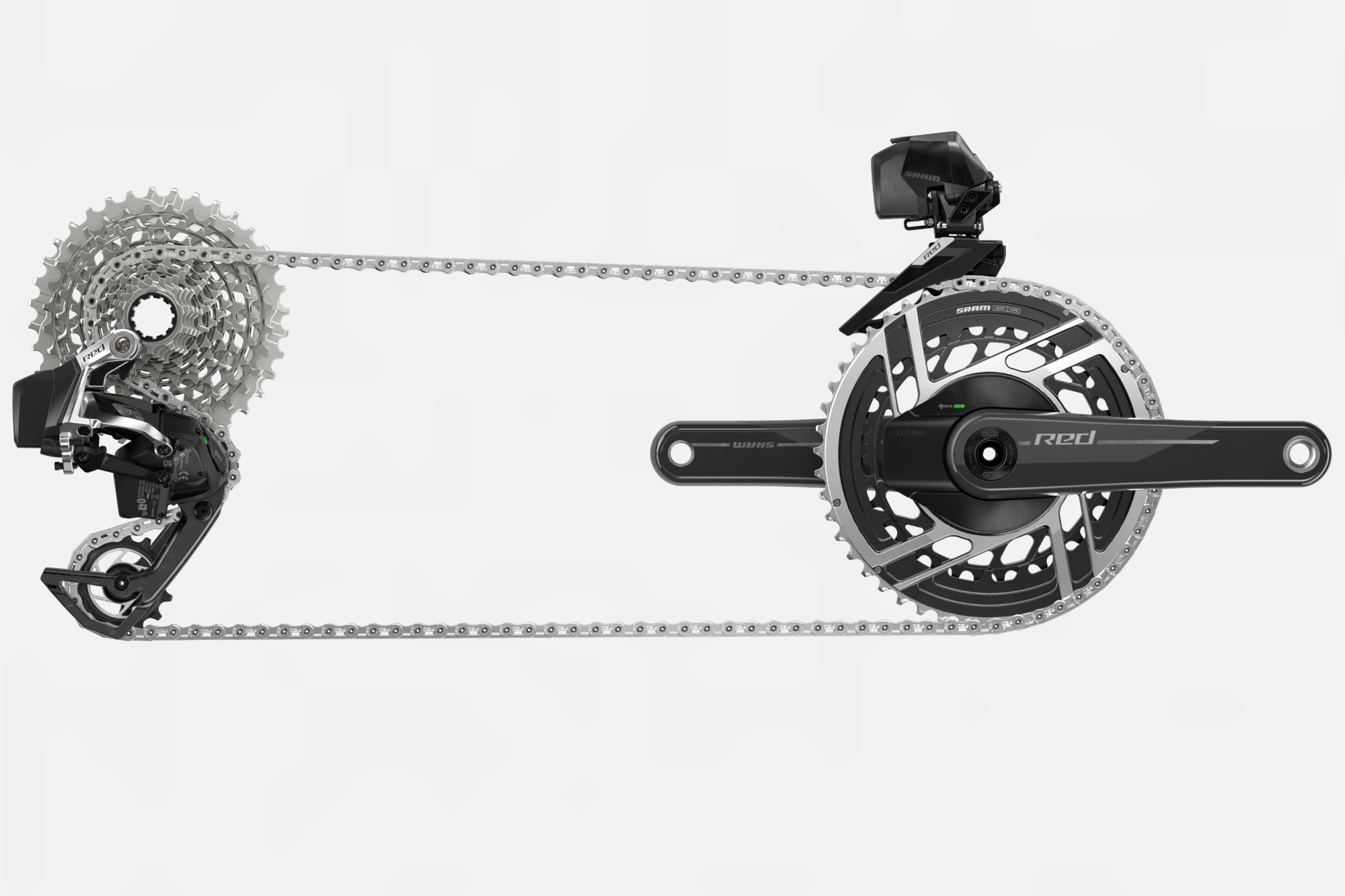
SRAM has slimmed down the front mech.
Braking & Ergonomics: Best in Class, With Minor Trade-offs
When it comes to braking, SRAM Red eTap AXS is, without question, the best on the market. The combination of superb modulation and the lightest lever action available makes for an outstanding braking experience. Someone should really give Sram a ‘most improved’ award here too, because the difference between the old and new groupset is almost frightening. I’ve since back to back tested the old and new Sram Red, all tested alongside Dura-Ace and the difference between all three is stark.
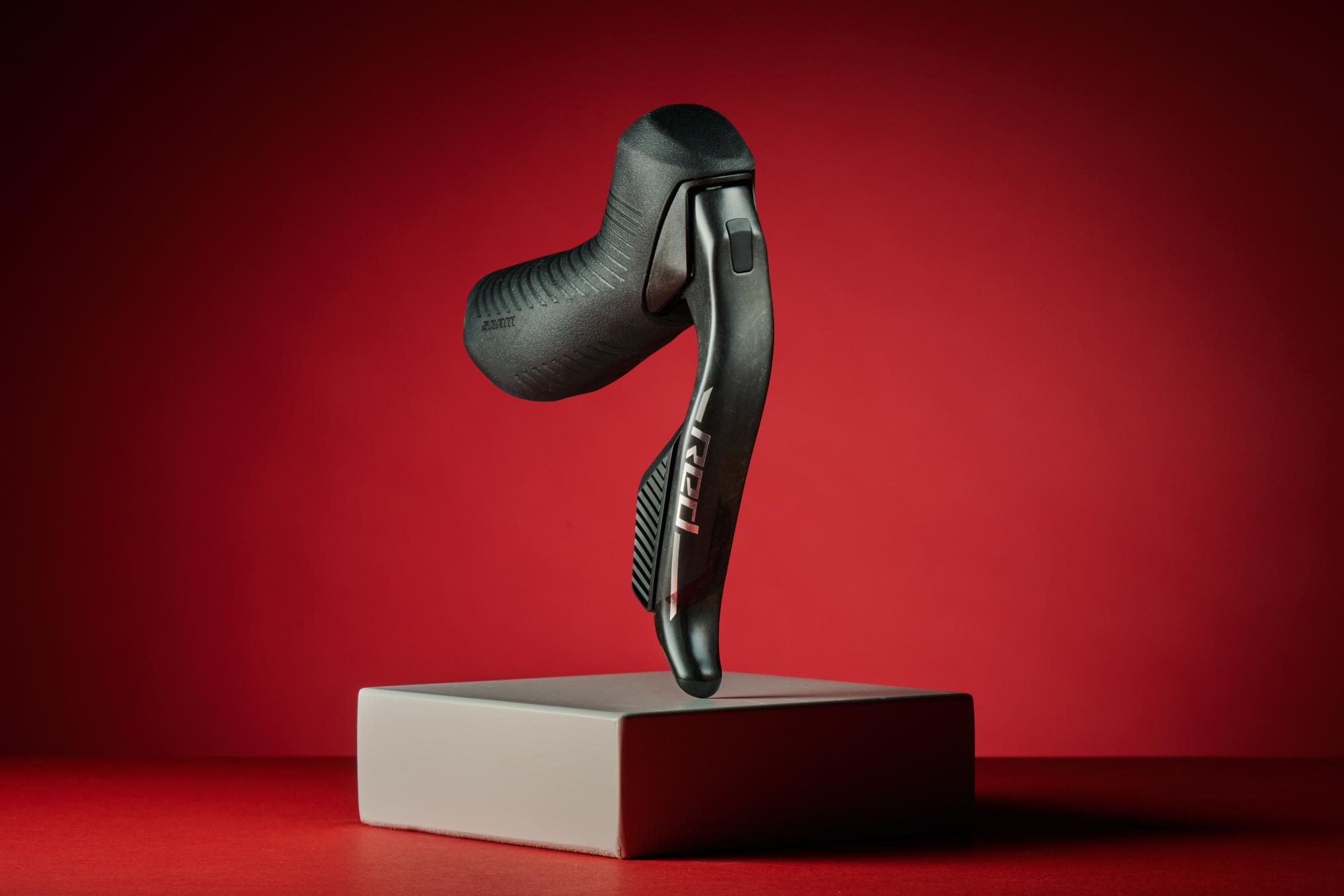
SRAM's hoods also feature lever throw adjustment, located underneath that rubber cover in the front of the brake lever.
The pivot point placement within the lever system ensures that even under hard braking, minimal force is required. This has real-world benefits - lighter braking action allows the upper body to remain relaxed, which in turn improves control and stability, especially on long descents where fatigue can creep in. The ability to brake with such little effort translates directly to better cornering confidence, something that is often less talked about when it comes to groupsets, but I truly believe there is a link here.
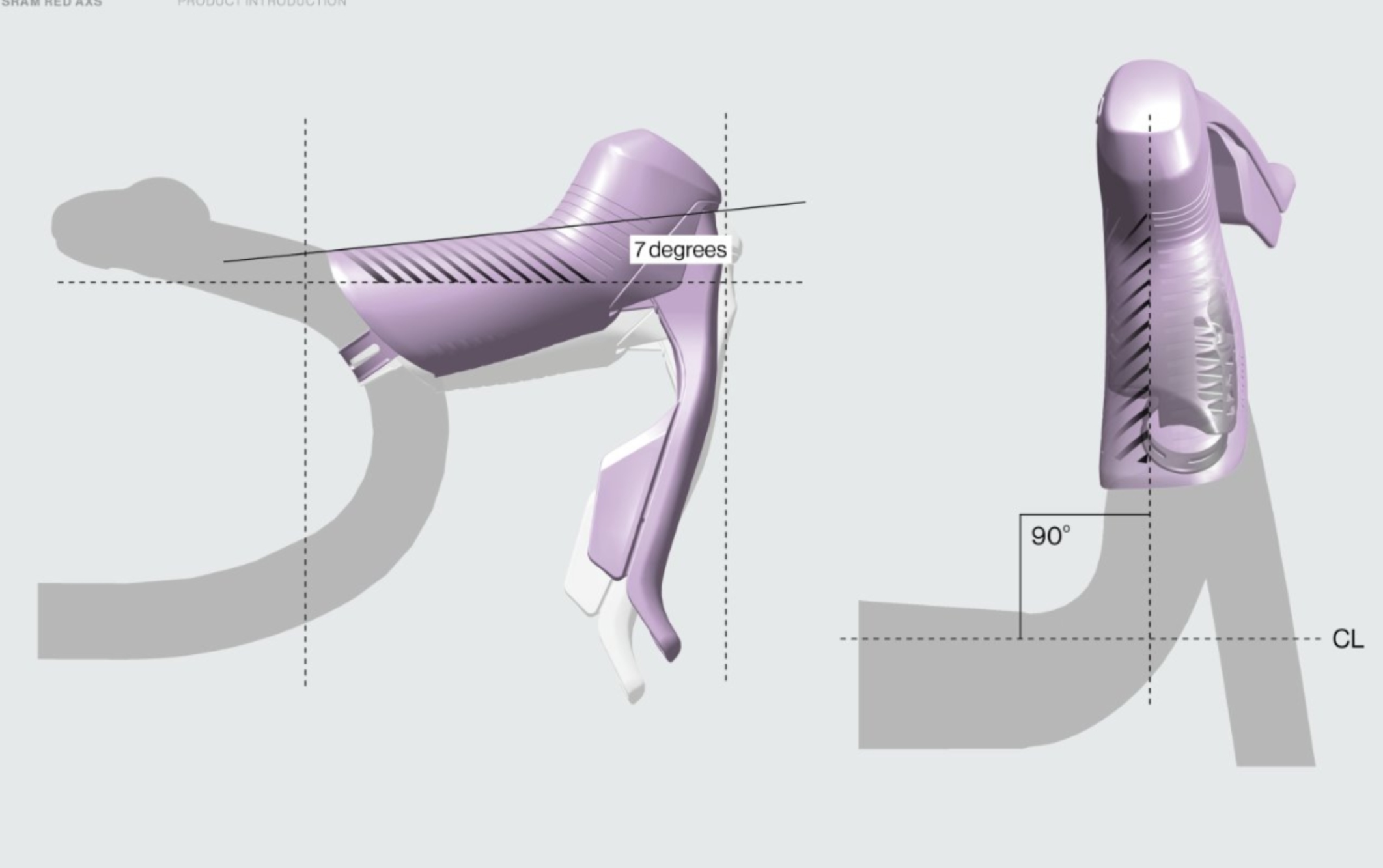
A higher hood angle and slight outward lever flare aids comfort in more relaxed riding positions.
Ergonomically, SRAM has nailed the hood shape for general riding. The levers feel natural in the hand, particularly when paired with slightly flared bars, and provides excellent grip and control. For gravel riding, they’re arguably superior to Shimano, thanks to the slightly larger hood profile, which offers better grip and a more stable platform over rough terrain.
That said, there’s one area where the design isn’t quite perfect. When riding in a more aggressive, aero-focused position - forearms flat, hands resting on the tops of the hoods - the slight outward flare of the brake lever blades can feel a little awkward. It’s not a dealbreaker, and for many riders, it won’t even be noticeable, but compared to Shimano’s more neutral lever profile, it’s a minor drawback.
Build quality: a big improvement
SRAM has made significant strides in build quality with this generation of Red AXS, bringing it much closer to Shimano in terms of durability and refinement. The materials feel premium, and the overall robustness of the components has noticeably improved over previous versions.
That said, there are still a few areas where it falls slightly short. While the shifting buttons are tactile and responsive, they lack the crisp, precise feel of Shimano’s. It’s a small detail, but one that’s noticeable in day-to-day use. Aesthetically, it’s a matter of personal taste - I still lean toward Dura-Ace’s sleeker look, but Red AXS remains a sharp, high-end groupset.
My biggest gripe, however, is the integrated power meter chainrings. SRAM doesn’t allow you to replace just the chainrings - you have to buy an entirely new power meter unit. This adds unnecessary cost and isn’t great from a sustainability standpoint. That said, Sram will discount your replacement unit.
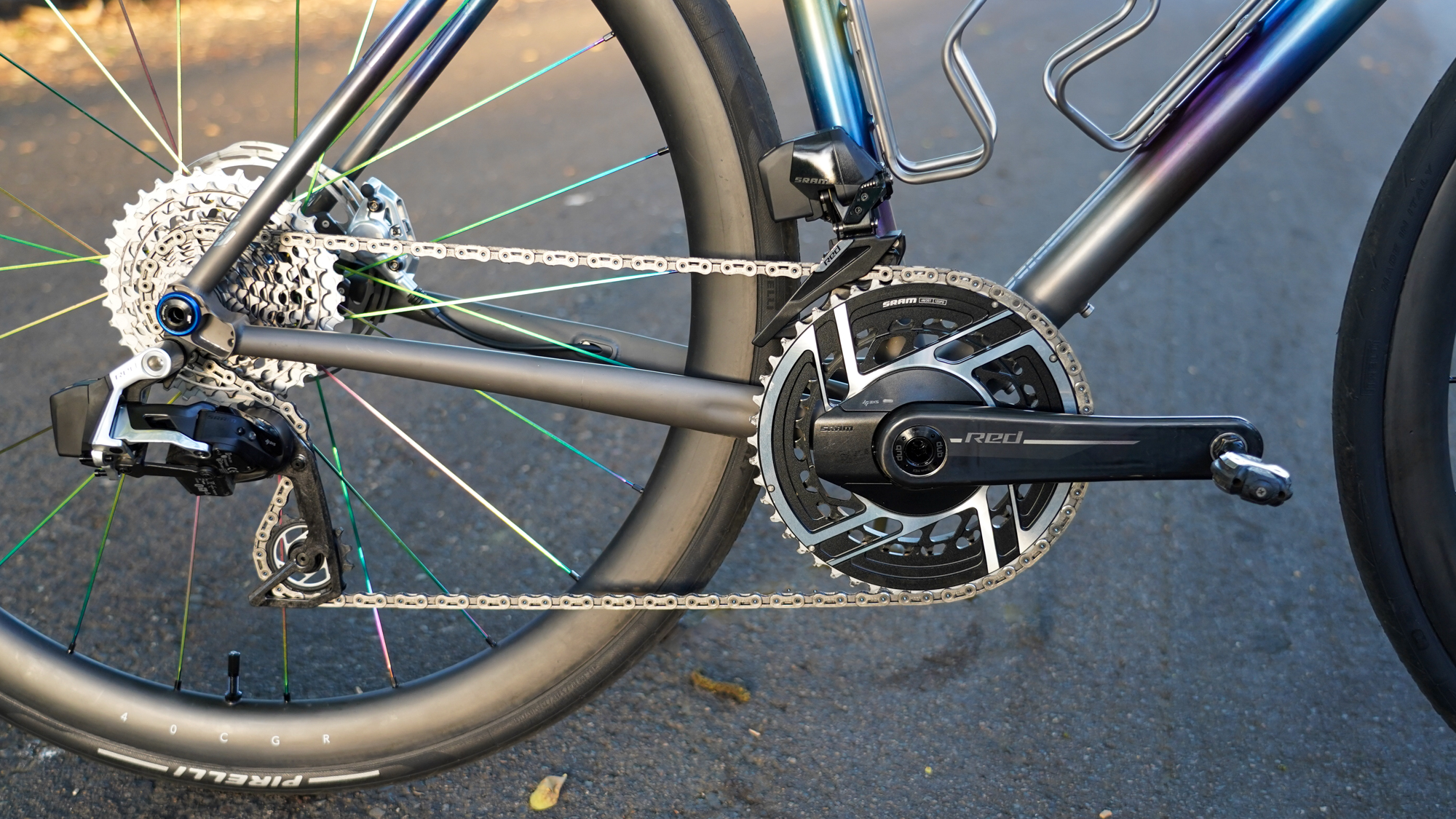
Derailleur stiffness and lever feel have both helped improve the build quality of the Red AXS groupset.
Features & usability: Intuitive, and rider-friendly
While the pro’s might not bat an eyelid when it comes to liveability, we here at Cycling Weekly certainly do. Bikes are getting trickier and trickier to service, whether that’s for the home mechanic or bike shops, and as such having good support for any product is essential - groupsets included. Sram’s Red AXS - and their other electronic groupsets for that matter, do this fairly well, for a number of reasons.
First up, the rechargeable batteries. They remain unchanged, yet undoubtedly one of the best aspects of the system - lightweight, long-lasting, and incredibly easy to charge. The fact that you can swap batteries between derailleurs in case of emergency is a huge plus. In real-world riding, I consistently got around 1,000 km per charge, which is completely respectable for an electronic drivetrain. Charging is quick and hassle-free, making battery anxiety a non-issue. I still prefer the removable batteries to Shimano’s system too, purely because it means you don’t have to bring your whole bike to a charger. If your bike is filthy, or locked up in the garage, you can remove the batteries and charge them indoors, just like any other accessory.
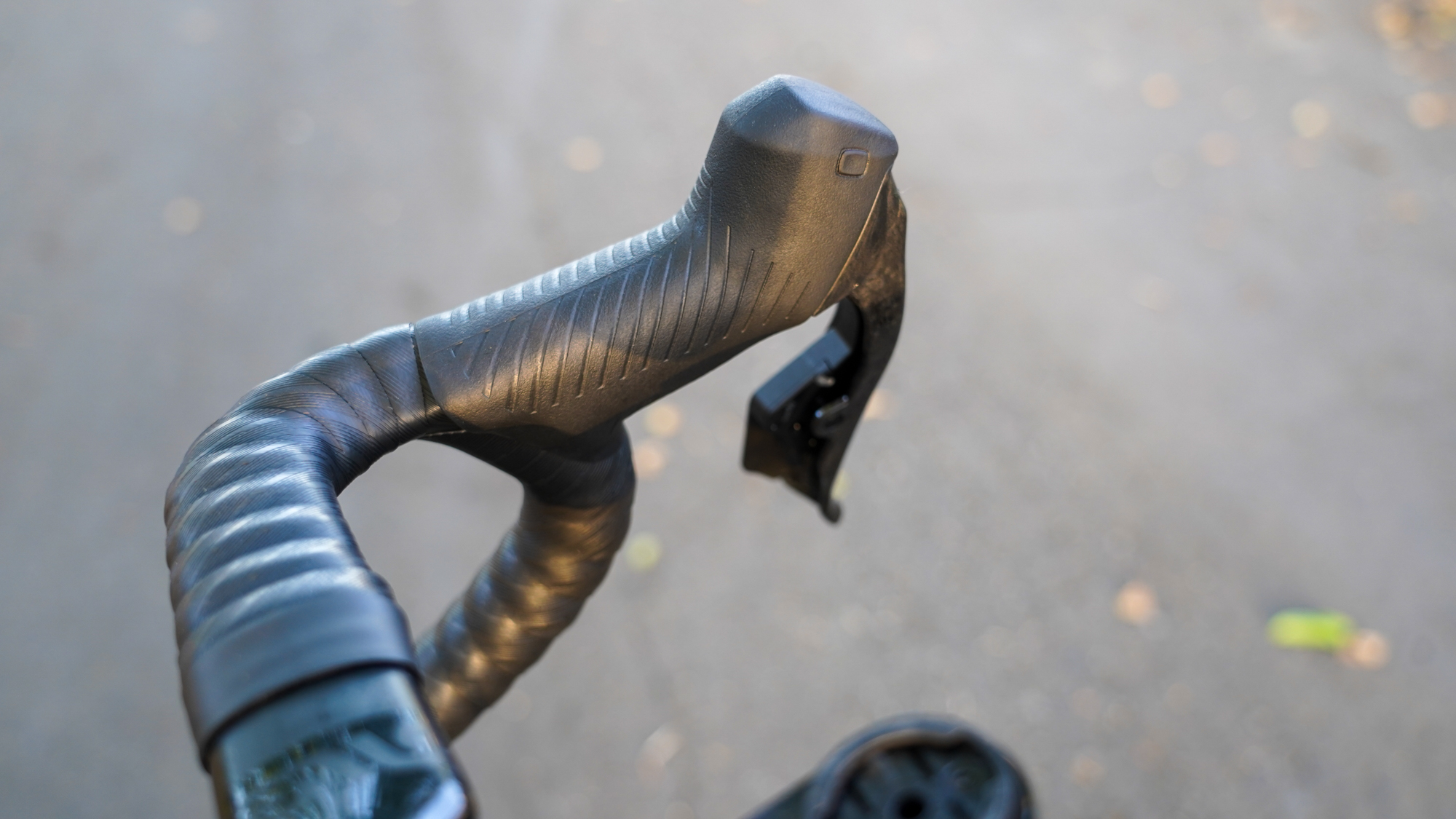
The bonus buttons are small, but incredibly functional.
Then there are the ‘bonus buttons’ on the hoods - a fantastic addition, albeit one where the American brand was playing catchup to Shimano. These customizable buttons can be used for shifting, scrolling through head unit screens, or even activating certain bike computer functions. For off-road and adventure riders, they add a layer of control that’s genuinely useful. Personally, I set them up for shifting, particularly for use in an aero position. They’re well-placed, tactile, and have proven durable over time.
Finally, SRAM’s AXS app has seen continuous improvements, making it arguably the most intuitive drivetrain app of the big three. It’s easier to navigate than Shimano’s eTube, offering a clean, visual dashboard for checking battery life, adjusting shifting preferences, and saving a setup to a bike or an account.
Who is it for? Adventure riders take note
While SRAM Red AXS is undoubtedly a high-performance groupset, its real strengths shine in endurance and adventure riding rather than pure racing. I’ve spent years chasing every minute gain there is in the cycling world, and the racer inside me, still believes that Shimano Dura-Ace Di2 holds the edge when it comes to outright speed. The faster shift times and slightly more refined ergonomics in aggressive aero positions make Di2 the better choice for riders who prioritise racing performance above all else. However, this is clearly personal preference too - Sram Red AXS is slightly lighter after all.
For long days in the saddle, though, mixed terrain, and general usability, SRAM Red AXS starts to eek ahead. Its excellent braking performance, easy-to-live-with wireless setup, and intuitive shift logic make it a fantastic choice for endurance riders and those spending more time on the hoods than in a full tuck. The ability to swap batteries, customize shifting through the AXS app, and rely on consistent modulation for long descents adds to its appeal.
Where SRAM is unquestionably ahead, though, is in 1x gravel riding. The Red XPLR variant, while not the focus of this review, shares many core components with Red AXS and is simply the best electronic option for dedicated gravel setups. If you’re tackling rough roads, big climbs, and unpredictable terrain, SRAM’s ability to support 1x drivetrains natively makes it the clear winner.
Ultimately, both SRAM and Shimano are incredibly close at the top level, and truth be told, I think I still sit on the Shimano side of the fence. However I most definitely find myself with less and less grounds on which to make that argument - the gap is closing.
Your move, Shimano!
Value
When it comes to value, I am going to put SRAM's individual component and groupset price to one side, purely because almost no one actually buys a groupset on its own - instead, you are generally buying an off the shelf bike.
The fact is, when you compare range-topping bikes from Canyon, Giant, Specialized, and others, generally speaking you are paying a minimum of a $500/£500 for a Sram Red AXS model bike over a Shimano Dura-Ace equivalent, and that is not insignificant.
For the right person, I would say that the cost is genuinely justified - perhaps if you are in the market for an all-road bike, or truly prefer the ergonomics of the Sram system having tried both.
For many though, I think that this cost, even in the premium market, may just be enough to put consumers off a Sram build over a Shimano one, and the bottom line is, that's why I am still in camp Shimano - JUST!

Thank you for reading 20 articles this month* Join now for unlimited access
Enjoy your first month for just £1 / $1 / €1
*Read 5 free articles per month without a subscription

Join now for unlimited access
Try first month for just £1 / $1 / €1
Get The Leadout Newsletter
The latest race content, interviews, features, reviews and expert buying guides, direct to your inbox!

Joe is Cycling Weekly's tech writer. He's always had a love for bikes, since first riding a two wheeled steed before the age of four. Years down the line, Joe began racing at 16, and enjoyed great experiences internationally, racing in Italy, Spain and Belgium to name a few locations. Always interested in tech, Joe even piloted his Frankenstein hill climb bike to a Junior National Title in 2018. After taking a step back from elite level racing in April 2022, Joe joined our team as a freelancer, before becoming Tech Writer in May 2023.
You must confirm your public display name before commenting
Please logout and then login again, you will then be prompted to enter your display name.
-
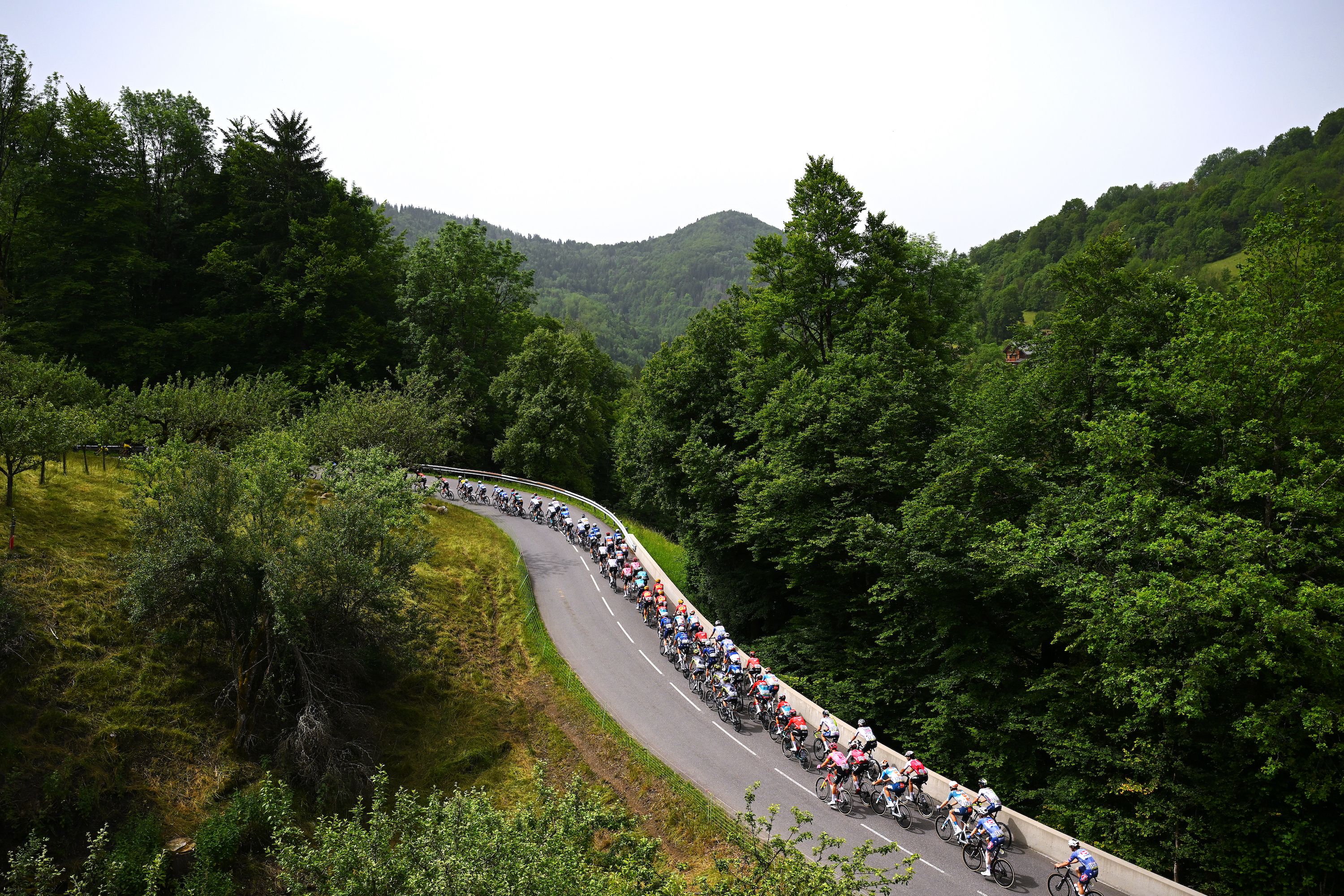 Tadej Pogačar, Jonas Vingegaard and Remco Evenepoel set to clash across mountainous week - everything you need to know about the Critérium du Dauphiné
Tadej Pogačar, Jonas Vingegaard and Remco Evenepoel set to clash across mountainous week - everything you need to know about the Critérium du DauphinéThe Tour de France warmup race is a tantalising prospect in its own right
By Adam Becket Published
-
 Chaotic stage 2 at Tour of Britain Women sees Mara Roldan win and Kristen Faulkner take race lead
Chaotic stage 2 at Tour of Britain Women sees Mara Roldan win and Kristen Faulkner take race leadYoung Canadian takes first WorldTour level victory after nail-biting finish atop Saltburn Bank
By Tom Thewlis Published
-
 David Millar's clothing brand CHPT3 saved by Factor founder
David Millar's clothing brand CHPT3 saved by Factor founderCompany entered 'voluntary liquidation' in December and immediately ceased trading
By Tom Thewlis Published